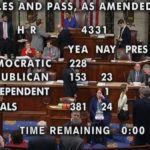 This past year, team members from Schultz & Williams attended both the Direct Marketing Association of Washington/Association of Fundraising Professionals’ (DMAW/AFP) Bridge Conference and the Direct Marketing Association Nonprofit Federation’s (DMANF) first Chicago conference. Here are some trends we observed.
This past year, team members from Schultz & Williams attended both the Direct Marketing Association of Washington/Association of Fundraising Professionals’ (DMAW/AFP) Bridge Conference and the Direct Marketing Association Nonprofit Federation’s (DMANF) first Chicago conference. Here are some trends we observed.
A focus on sharing resources: Many of the sessions were “silo-breakers,” emphasizing collaboration and open, proactive information-sharing among organization’s team members. Development officers are partnering with Direct Response staff to find the balance between regular, consistent grassroots giving and deeper engagement and investment. Data are supporting this alignment, as major gifts teams are using analytics tools to target prospects and using metrics to define success. In the consultant community, as more nonprofits partner with a range of firms and businesses to engage constituents, collaboration is yielding breakthrough results.
Improving donor value remains front and center: Both conferences showcased ways to bring donors closer through increased interaction and investment. Sustainer programs, stewardship roadmaps and mid-level strategies made up a good percentage of the content. With the overall pool of American donors still in decline, organizations are investing more in every donor relationship, using data to target donors and a combination of high- and low-touch communications to engage them.
Refining the intersections of data, channel, content and the donor journey: Where channel attribution was the buzz a few years ago, the donor journey remains in the forefront now. Hand in hand with greater collaboration and transparency between fundraising teams, organizations are mapping donor journeys and using data to optimize messaging and the flow of content across channels. Several sessions showcased the findings of early adopters to this trend, but it was clear that best practices (and potential for scalability) are still emerging.
Low-profile innovation: In the nonprofit sector, combining our limited resources with passion for our missions creates potent force for change. For example, we’re hearing more about the application of behavioral economics to our nuanced missions, seeing more organizations craft an effective framework to allow for employees who work off-site and examining how we can create an internal culture that promotes philanthropy as well as social good. These strategies are vital to the success of the small and mid-sized organizations that make up much of our sector. And that’s exciting to see!




